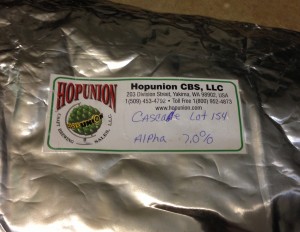In the previous post, I related a quick and dirty way to estimate the loss in alpha acids of hops over time, assuming they were stored in a freezer. That method was based on two measured variables (initial alpha acid percentage and amount left after 6 months at 68 °F/20 °C), plus a couple “guesstimations” — how the rate of loss changed at colder temperatures and a linear extrapolation from the initial condition through the one “data” point.
We would expect the loss of alpha acids to be an exponential function. So, it’s almost certain the simple model underestimates hop losses prior to six months and overestimates them after 6 months — although the deviations should be small. Using the simple method is better than not accounting for the losses at all, but there is a more accurate way of estimating the alpha acids if you’re willing to put in a little more work. [Read more…]




Recent Comments